Activated Carbon
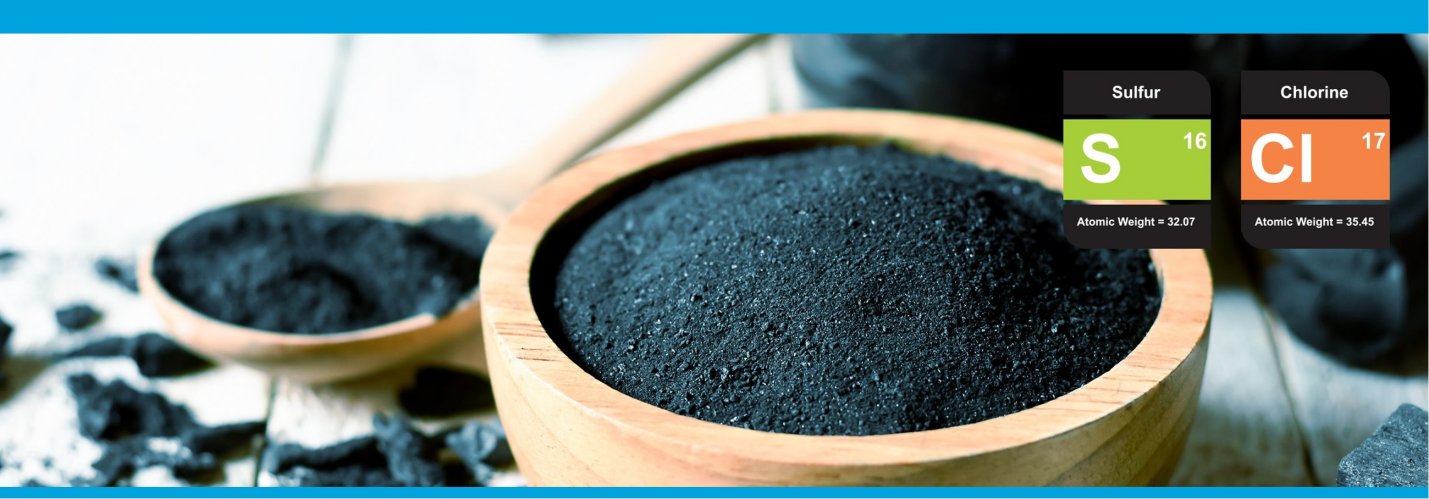
Scope
The measurement of sulfur (S) and chlorine (Cl) in activated carbon is demonstrated.
Background
Activated carbon, also called activated charcoal, has many uses as a filter medium and absorbent, including water and gas purification, decaffeination, gas mask air filters, gold processing, metal extraction, and sewage treatment. Sulfur and chlorine may occur naturally in charcoal, and in the production and regeneration of activated carbon various solvents may be used, including sulfur-based and chlorine-based solvents. As the material is processed, the sulfur and chlorine levels are monitored until they reach an acceptable content. EDXRF offers a fast, simple, and affordable method of measuring the sulfur and chlorine content with little or no sample preparation and relatively short analysis times. The NEX QC+ is a self-contained, touchscreen analyzer, ideal for use by non-technical operators throughout the quality control of activated carbon processing and recycling.
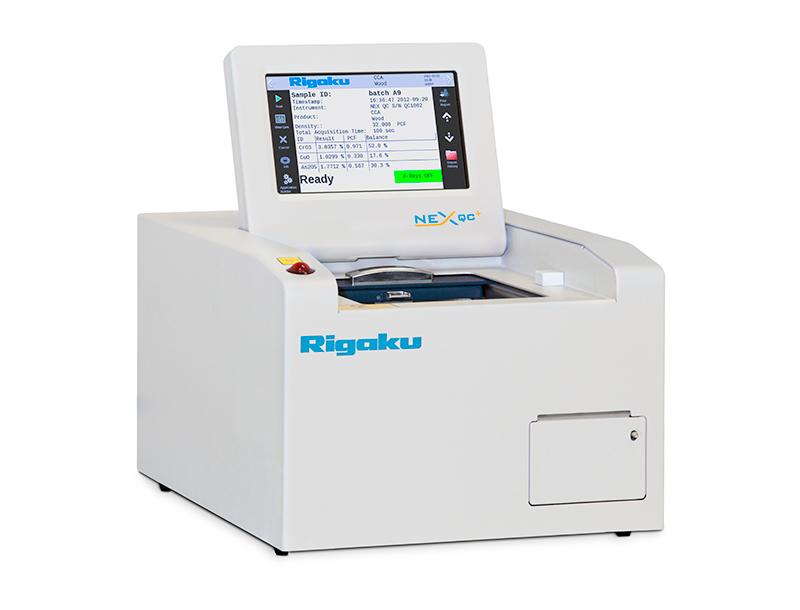 Model: NEX QC+
Model: NEX QC+
Calibration – broad range
Seven calibration standards assayed for S and Cl were used to generate empirical calibrations. Fe was also measured to enable correction factors, which automatically compensate for its absorption/enhancement effects on the S and Cl X-rays.
| Element: S Units: % |
||
| Sample I.D. | Standard value | Calculated value |
| 0 | 0.02 | 0.049 |
| 1 | 2.50 | 2.546 |
| 2 | 0.30 | 0.260 |
| 3 | 1.19 | 1.305 |
| 4 | 2.30 | 2.220 |
| 5 | 0.55 | 0.500 |
| 6 | 1.76 | 1.729 |
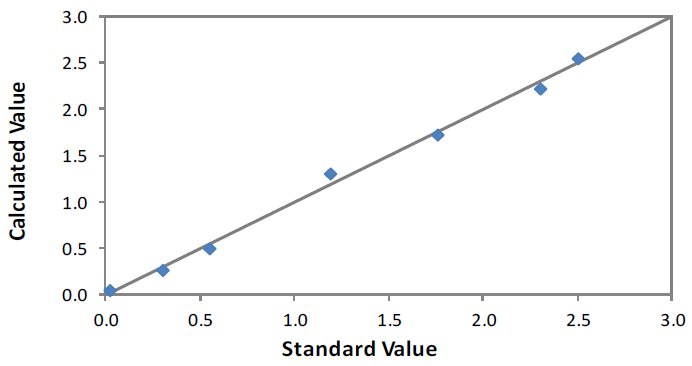 Correlation plot S
Correlation plot S
| Element: Cl Units: % |
||
| Sample I.D. | Standard value | Calculated value |
| 0 | 0.03 | 0.011 |
| 1 | 8.87 | 8.822 |
| 2 | 0.75 | 0.745 |
| 3 | 4.55 | 4.435 |
| 4 | 7.57 | 7.654 |
| 5 | 1.49 | 1.564 |
| 6 | 6.19 | 6.219 |
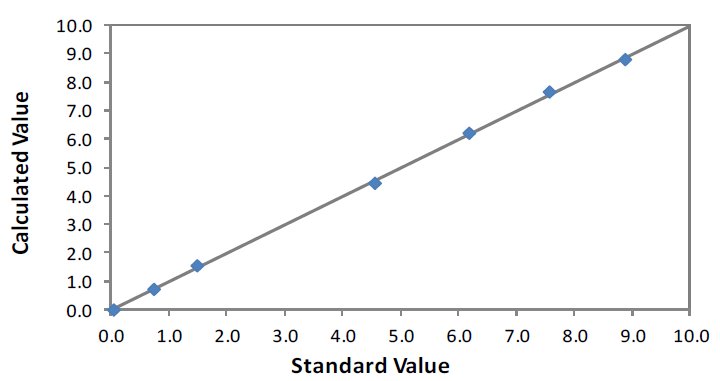 Correlation plot Cl
Correlation plot Cl
Aside from S and Cl, a significant amount of Fe is also present in the samples. The Fe is measured in order to enable an “alpha” correction to compensate for its effects on the S and Cl X-rays. The calibration model can be optimized by adding a few more standards to the set in order to ensure enough degrees of freedom to enable alpha corrections for other elements present, such as P, K, Ca, Ti, and Ni.
Split calibrations
Calibration accuracy depends mainly on the goodness of the set of calibration standards. Accuracy can also be further optimized by splitting the range into a low range and a high range using two separate calibrations. In this way, each range can be optimized as a separate calibration.
As an example, shown here is low range S calibration when split from the broad range. As with the broad range, adding a few extra standards to the low and high range calibrations will best define the X-ray absorption effects, creating an optimum model for the material.
| Element: S Units: % |
||
| Sample I.D. | Standard value | Calculated value |
| 0 | 0.02 | 0.023 |
| 2 | 0.30 | 0.292 |
| 3 | 1.19 | 1.189 |
| 5 | 0.55 | 0.556 |
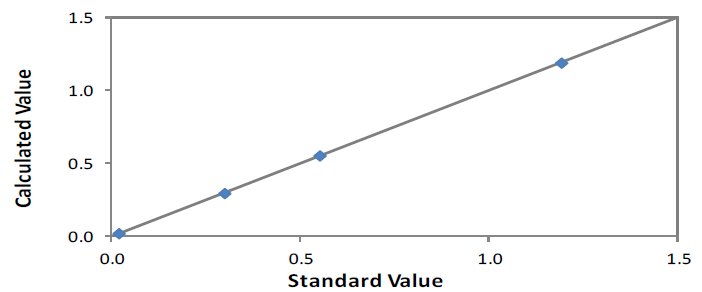 Correlation plot S (low range)
Correlation plot S (low range)
Repeatability
To demonstrate recovery and repeatability, a low and a high calibration standard were selected and measured against the broad range calibration. Each was measured in 10 repeat analyses without moving the sample between measurements to determine the average and standard deviation (Std. Dev) for precision.
| Sample ID: Std 1 Units: mass % |
||||
| Element | Standard value | NEX QC+ average value | Std. dev | % Relative dev |
| S | 2.50 | 2.542 | 0.011 | 0.4 |
| Cl | 8.87 | 8.84 | 0.021 | 0.2 |
| Sample ID: Std 2 Units: mass % |
||||
| Element | Standard value | NEX QC+ average value | Std. dev | % Relative dev |
| S | 0.30 | 0.262 | 0.002 | 0.7 |
| Cl | 0.75 | 0.737 | 0.002 | 0.3 |
Conclusion
The NEX QC+ offers the lab analyst or at-line QC technician a simple and fast tool for measuring sulfur and chlorine in activated carbon. The versatility of the NEX QC+ EDXRF analyzer also allows for the measurement of other elements in the material, given assays for them in the set of calibration standards.
